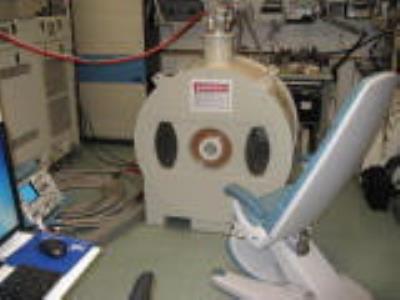Shahin Pourrahimi1, Jerome L. Ackerman2,3, John E. C. William1, Nadder Pourrahimi1, and Alexey Kaplan1
1Superconducting Systems, Inc., Billerica, MA, United States, 2Martinos Center, Dept of Radiology, Massachusetts General Hospital, Charlestown, MA, United States, 3Department of Radiology, Harvard Medical School, Boston, MA, United States
Synopsis
In
a project to develop a compact MRI limb scanner for orthopedic and metabolic
bone disease applications we developed a three-bore 1.5T magnet with the
following design goals: ability to operate the magnet in a small point-of-care space,
elimination of liquid cryogens for installation or operation, a comfortable
patient experience while scanning knees, ability to tilt the magnet to
accommodate patients rather than requiring patients to accommodate to the
magnet, and capability for conventional and solid state proton and phosphorus
MRI for metabolic bone disease assessment.
Introduction
The
overall goal of this project is to develop a compact MRI limb scanner for
orthopedic and metabolic bone disease applications. The design goals included
the ability to operate the magnet in a small point-of-care space, complete
elimination of liquid cryogens for installation or operation, a comfortable
patient experience while scanning knees, the ability to tilt the magnet to
accommodate patients rather than requiring patients to accommodate to the
magnet, and both conventional and solid state proton and phosphorus MRI for
metabolic bone disease assessment. The following reports the results of the
design and construction of a prototype cryogen-free three-bore superconducting
1.5T magnet as the first milestone in the project.Methods
Conventional
superconducting magnets use liquid helium for their cooling. Logistical
complexities associated with the service of liquid helium and managing
(venting) a large volume of helium gas following a quench have been among the
main barriers to MRI scanners from entering point-of-care use and use in the
physician’s office. To remove these barriers, the magnet was designed to be conduction cooled
with a cryocooler. It requires no liquid cryogens for cooldown or normal operation; a quench
results in warming of the coldmass, which merely needs to be cooled back to
operating temperature in order to charge it back up to field, a process that
takes 4 hours. The absence of cryogenic fluids permits the magnet to be moved
and tilted while charged. To accommodate knee scanning comfortably without
awkward positioning of the leg not being scanned, the magnet was constructed
with three warm bores (Figure 1). The central 295
mm bore
is the “actual” bore with the homogeneous field, and the truncated oval bores
on either side of the central bore are placed to accommodate the leg not being
scanned. The shielding coils of the central bore encompass all three bores to
permit the “dummy” bores to be close to the central bore.Results
A
nine coil design was optimized via an internally developed magnetic design simulation
using Opera Simulation Software (Cobham Technical Services, Oxfordshire, UK), to
produce a 1.5 T target field at 120.5 A current, and an oblate ellipsoidal
homogeneous (5 ppm) volume with radii of a = b = 180
mm
and c=160 mm, in a short 550 mm warm bore (Figure 2). The magnet was equipped
with a Sumitomo SRP-082 cryocooler with a first stage cooling capacity of 40 W
at 45 K and second stage capacity of 1.0 W at 4.2K. It required about four days
to cool from room temperature to 3.7 K. The 5 Gauss line is about 1.70 m from
isocenter on axis and about 1.50 m radially. The magnet may be ramped in 1 hour.
The field exhibits no measurable drift over one day, but shows a small short
term cyclical excursion of 0.4 ppm associated with the displacement of the
coldhead regenerator. This was reduced to about 0.15 ppm with the installation
of a small superconducting shield.Discussion
The
work demonstrates the basic feasibility of this novel three-bore cryogen-free highly
compact magnet design (Figure 3). The regenerator-associated field variation
can likely be reduced further with more extensive shielding and/or room
temperature B0 compensation. In its current state, the magnet is
equipped with a pulse tube cryocooler which permits only very limited tilting,
but can be cooled with a Gifford-McMahon unit that permits full tilting with
somewhat higher vibration and expense.Conclusion
The
cryogen-free three-bore compact superconducting magnet is practical and could
form the basis of a dedicated extremity MRI scanner.Acknowledgements
Funding was provided by National Institute of Arthritis and Musculoskeletal and Skin Diseases grant R44AR065903.
References
No reference found.


